Open position G7 and its movable form and variations - Sevenths, Major Sevenths, Minor Sevenths, Diminished, Augmented chords sus and add chords.
Available for Premium Site Access Plans Only
Sorry, can't give it ALL away!
This content requires a Premium / Gold Access Plan or enrolled in the Study with Curt - On-line or Private Lesson Program.
To view additional content for this page you'll need to either Sign In or Register or Upgrade to a Premium Site Access Plan .
Open Position

Movable Form

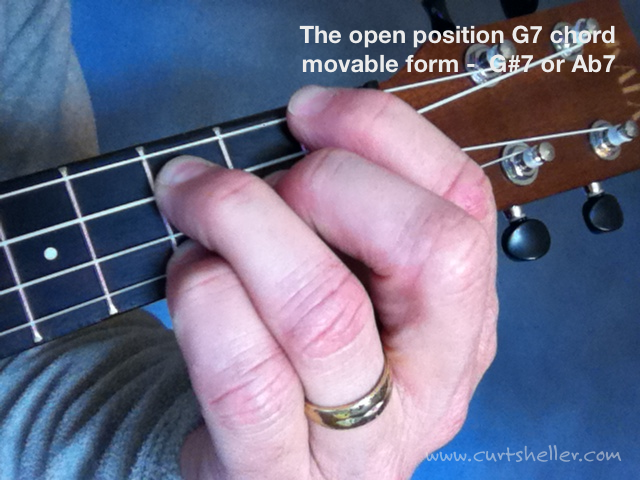
Checkout the Learn a Chord a Day lessons for Open Position G7 for all the information you can get from a chord.
Note Regarding Chord Photos
Photos of chords cannot typically show efficient fingering as comprises need to be made to show only the fingers playing or fretting notes.
Fingers should remain over the fingerboard even when not playing notes — ready to go, which typically does not make for a good photo.
Transposing Movable Form Chords
These lessons use the root of a chord to transpose to different keys.

Root and Perceived Root
Determine what string the root is on or would be on if not present (perceived root) in the chord's voicing.
Chord Transposition Chart
This transposition chart can be used for any chord where the root, or letter name of the chord is on the G string .
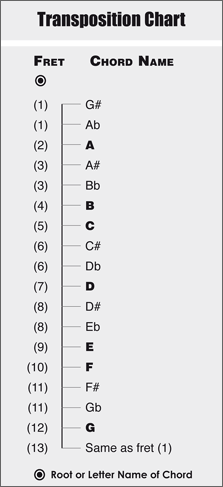
The root is on string 4, the G string.

![]() A larger sized transposition chart is available in the Ukulele Chords book. This
is the book these expanded chord lessons are based on.
A larger sized transposition chart is available in the Ukulele Chords book. This
is the book these expanded chord lessons are based on.
Chord Tones – G B D F
The chord tones of a G7 chord are the 1st, 3rd, 5th and flatted 7th scale degrees of the G Major Scale ( G A B C D E F#' ) .


- 1 – the Root or letter name of G7 is G
- 3 – the third of G7 is B
- 5 – the fifth of G7 is D
- b7 – the flat seventh of G7 is F
Movable Chord Forms

Movable chord forms are chords containing no open strings. These chords can be transposed to different keys by moving each note of the chord the same number of frets up and down the neck.
Movable form chords allow you to play in any key and transpose chords, progressions, and songs to any key. From basic movable form chords, more advanced chords can be created.
The functional range of a movable chord depends on the ukulele's size (soprano, concert, or tenor), the number of frets to the body (10, 12, 14, etc.) and whether you have a cut-away for access to higher frets. Not all chords can be transposed a complete octave (12 frets).
Movable form chords can be used along with open-position chords. As you learn more movable form chords, you'll have a variety of alternate voicings for any given chord.
Movable form chords can be transposed up and down the fingerboard using the root of the chord and a transposition chart, or through knowledge of the names of the notes on the fingerboard.

Creating Chords from Known Chords
This lesson's chord is also closely related to the chord from lesson 4, G . A G7 can be created by lowering the root G on string 2, two frets.
Misnamed 7th Chords
Seventh chords are often misnamed as dominant seventh chords.
Whether a chord is a Dominant chord refers the its harmonic function within the chord progression — how it's being used. If the chord is functioning as a true V, or five chord in the progression it can be called a dominant seventh chord. If not it's simply a seventh chord and doesn't or shouldn't have any harmonic designations added to its name. We don't call other chords a Tonic Seventh, Sub-Dominant Seventh, or Medient Seventh.
For more information on dominant seventh chords see my UkuleleLesson: : When Is A Dominant Seventh Chord Not A Dominant?
Chord Fingering
Chord fingering is dependent on several factors. The chord you're currently on, the previous chord, the next chord, your hand, and fingers. All chord fingerings shown are recommended fingerings and not mandatory. Most chords have alternate fingerings dependent on the context. The same chord might even be fingered one way in one part of a song or progression and an alternate fingering in another part.
Core Chords
The seventh chord form is a core chord voicing for creating additional 4-part chords. From core chords other all other 4-part chords can be derived. There is a minimum core set of six 4-part chords to get started with. There are: 7, maj7, m7, m7b5, dim7, 7+5. A complete core set of eleven is needed to really explore 4-part chords. This set of eleven include the minimum set of six as well as: 6, m6, mL7, dimL7, +L7. To throughly explore these core set of chords and their possible extensions, upper partials and alterations see my book A Guide to Advanced Chords for Ukulele
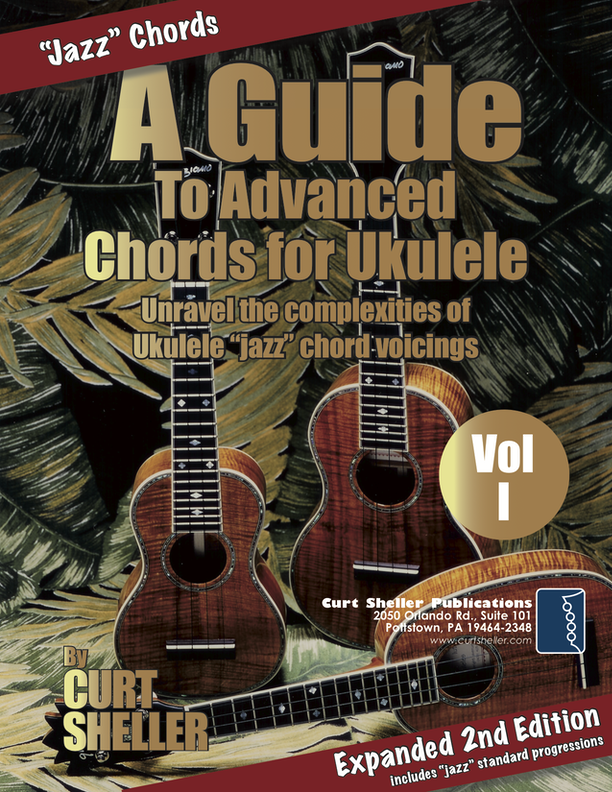
Derived Chords
7sus4
Raise the third (3) of a seventh chord one fret.
Major Seventh Chords, maj7
A major 7 chord is created by raising the flat seven of a seventh chord one fret.
A major 7 can also be created from a major triad by lowering the root one fret.
m7th (m7)
Any minor 7 chord is created by lowering the third of a seventh chord one fret for a b3. An example would be from a C7 ( C E G Bb ) lower the E to Eb.
Any minor 7 can also be created from a major triad by lowering the third one fret. An example would be from C ( C E G ) lower E to Eb.
A partial minor 7 can also be created from a minor triad by lowering the root two frets. An example would be from Cm ( C Eb G ) lower C to Bb.
6 or maj6
The major 6 or 6th chord is created by lowering the b7 of a seventh chord one fret. An example would be from C7 ( C E G Bb ) lower the Bb one fret to A for C6 ( C E G A ).
The major 6 can also be created from a major seventh chord by lower the seventh two frets. An example would be from Cmaj7 ( C E G B ) lower the B two frets to to A for C6 ( C E G A ).
9th Chords
A 9th chord is a 5-part chord.
For a 5-part 9th chord, the root is implied and displaced for the ninth. Optionally the 3rd of a 7th chord can be lowered two frets (a whole step) for 1 9 5 b7. This really works if you have already played the chord with the third present and establishing the color of the chord.
To create a ninth chord raise the root of a 4-part chord two frets. This applies to a 7th, maj7, m7, 6, m6, m7b5, etc… Most all 4-part chords can be turned into ninth chords. For a 7th chord this would be a 9 3 5 b7.
This same process can be applied to a triad by raising the root two frets. For these chords they are typically called add2 or add9 chords.
Chords are pretty flexible and can be implied by containing the notes of the chord that make it different then another chord types with the same root. Take C and Cm, C is C E G and Cm is C Eb G. The third of the chord the E or Eb is a color tone and is responsible for making a major chord different sounding then a minor chord with the same root.
Chord Progressions
Using the transposition for this weeks chord practice the below progression.
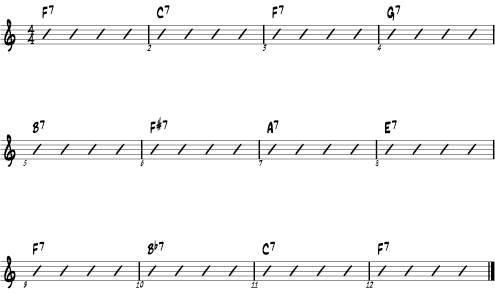
Blues in the key of C
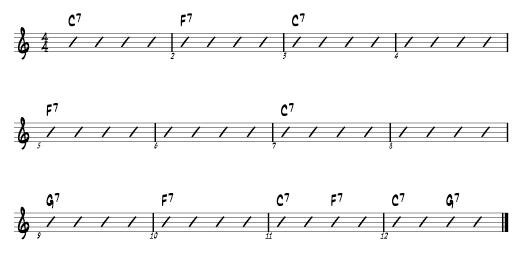
Related Lessons, Videos, Lesson Series, Songs, Books & Reference Charts, Resources & Assets, Workshops are below.
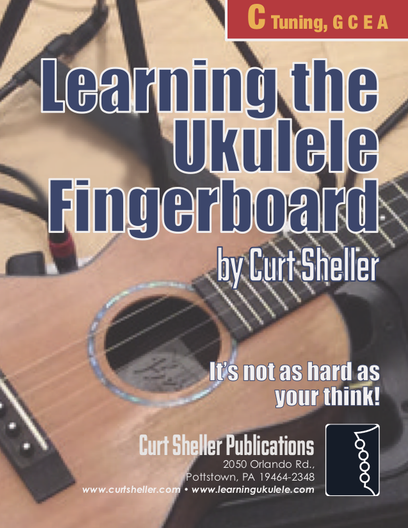
Finally, learn the names of the notes of the ukulele fingerboard in C tuning .
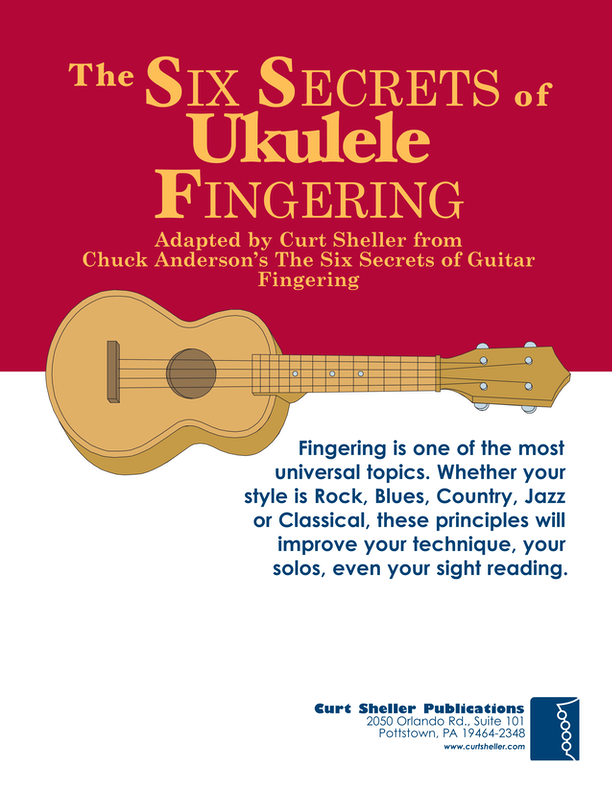
Learn the six fingering principles to navigating the ukulele fingerboard. Fingering is one of the most universal topics. Book: Six Secrets of the Ukulele Fingering
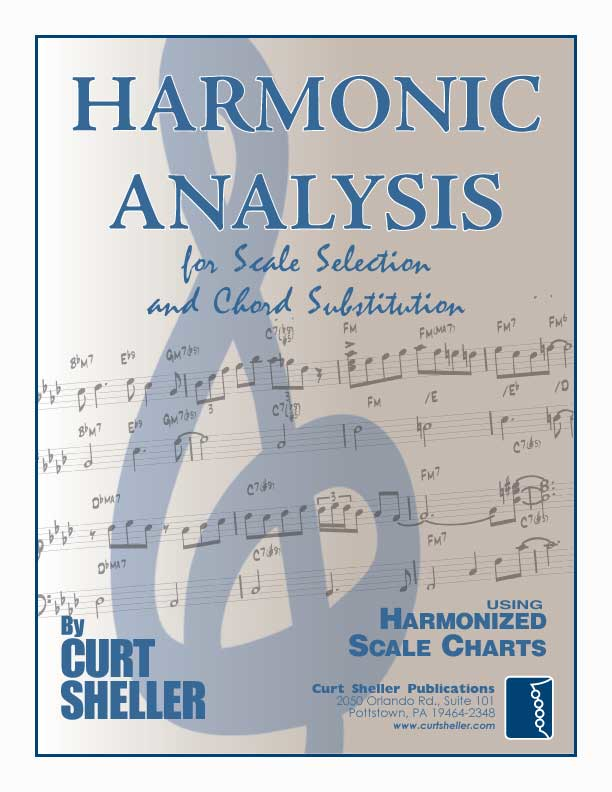
Harmonic Analysis is the understanding of the functional sequence of chords. It is the process used to analyze the harmonic structure of a progression, song or composition. Book: Harmonic Analysis for Scale Selection and Chord Substitution
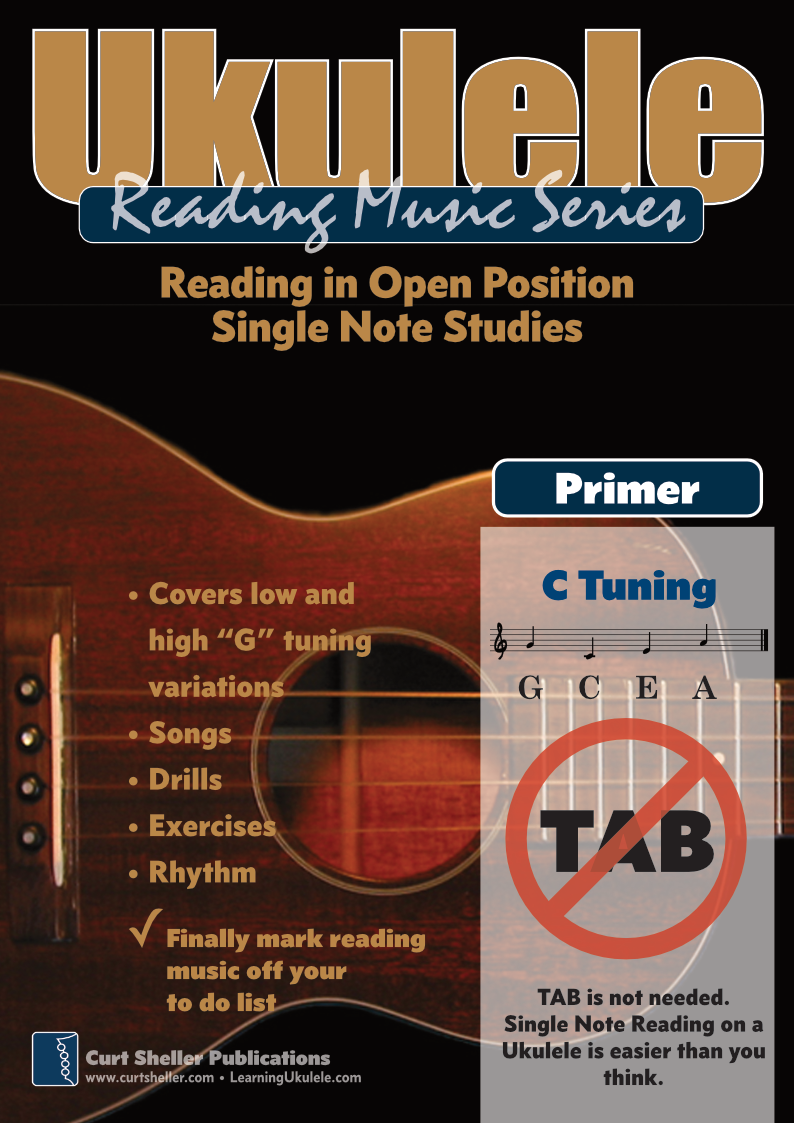
Learn to read single note melodies in the first/open position is a lot easier than you might think. Book: Ukulele – Reading Music Series – Primer
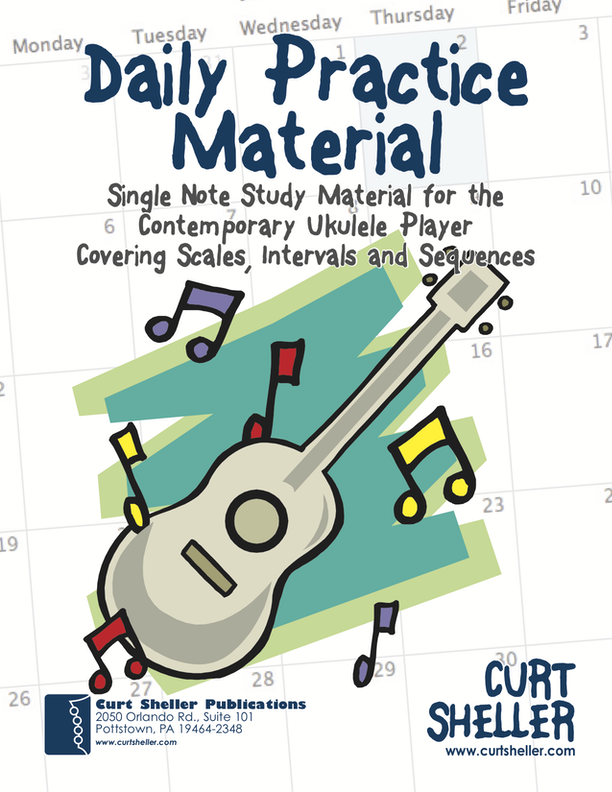
An organized collection of daily practice and reference material for the contemporary ukulele player for developing the vocabulary and knowledge necessary for single note playing. Book: Daily Practice Material for the Contemporary Ukulele
Checkout the Books & Reference Charts for additional Handy, Dandy Reference Charts.
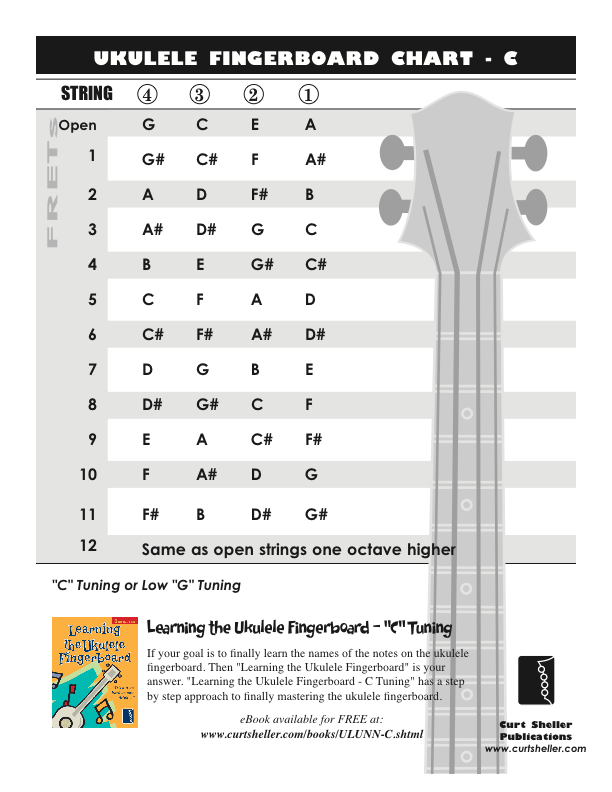
Ukulele Fingerboard Chart for C Tuning, Low or High G – G C E A
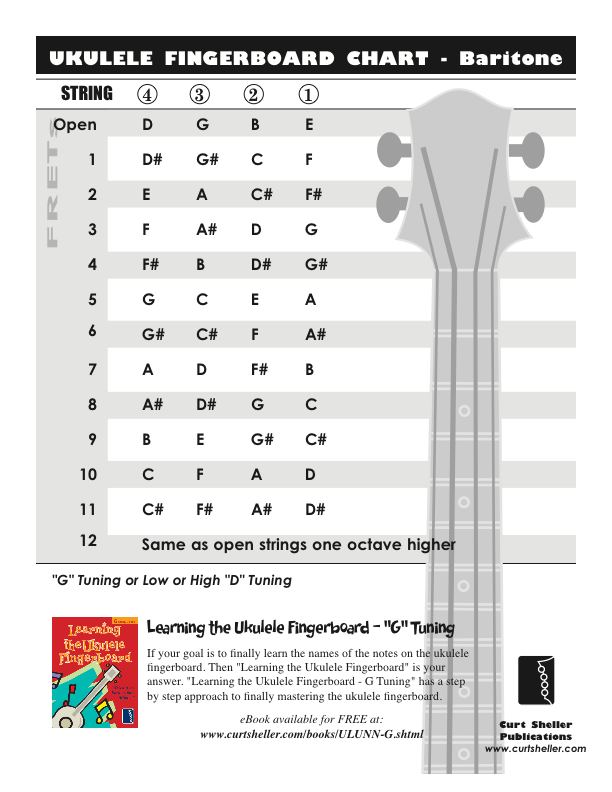
Ukulele Fingerboard Chart for G Tuning, Low or High A – D G B E
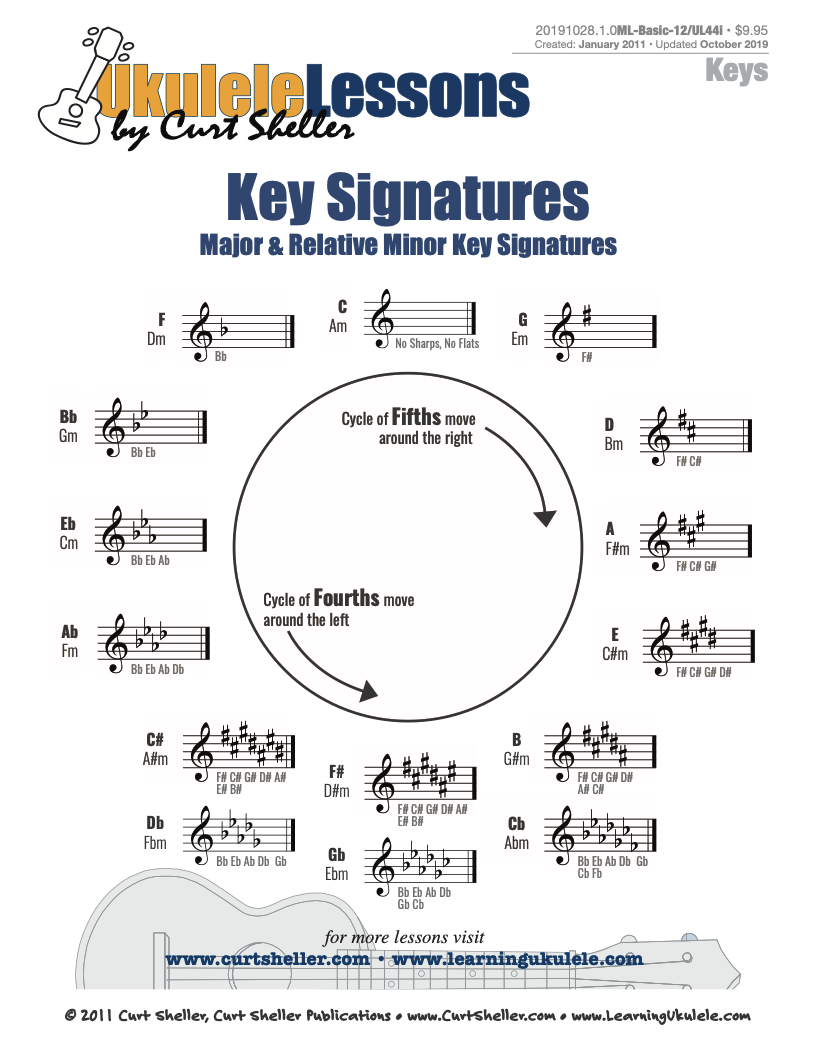
A handy reference chart of all 15 major and relative minor key signatures. US Letter 8.5 x 11 sized (ANSI-A), A4
Checkout the Books & Reference Charts for additional Handy, Dandy Reference Charts.

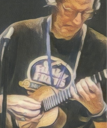
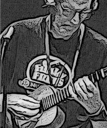

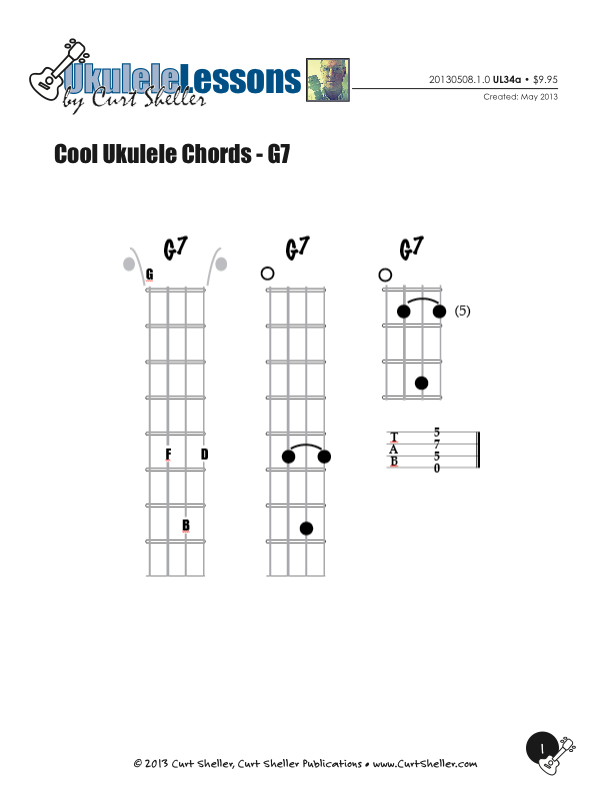
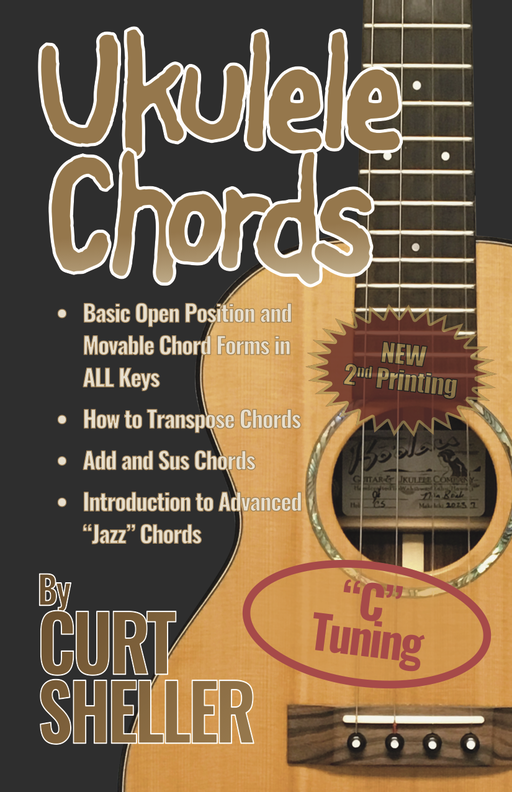
.jpg)